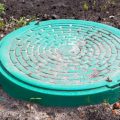Introduction to Rainwater Harvesting in the UK
Collecting rainwater has become increasingly popular among UK households and garden enthusiasts, especially as awareness grows about environmental responsibility and the need for resource conservation. The UK’s climate, characterised by frequent rainfall, provides an excellent opportunity to make the most of this natural resource. By setting up a simple DIY rainwater collection system, you can reduce your dependence on mains water, helping to lower utility bills and contribute to a more sustainable lifestyle.
Rainwater harvesting offers clear benefits. Environmentally, it reduces demand on treated tap water, which requires energy-intensive processing and transportation. Using collected rainwater for tasks like watering gardens, washing cars, or cleaning patios means less treated water is wasted. Financially, this leads to savings on water bills—a practical advantage for any household looking to cut costs without sacrificing quality of life.
Whether you’re keen to keep your garden thriving during hosepipe bans or simply want to make eco-friendly changes at home, building your own rainwater collection system is an effective and rewarding project. In this guide, we will explore how you can set up a budget-friendly solution with materials that are easy to source across the UK.
Choosing the Right Spot for Your Water Butt
Before setting up your rainwater collection system, it’s essential to find the perfect location for your water butt. A well-chosen spot will maximise water collection, make access easier, and ensure your system blends neatly into your garden space. Here are some practical tips to help you select the best place, keeping in mind typical British weather and common garden layouts.
Key Factors to Consider
| Factor | Why It Matters | Recommended Choice |
|---|---|---|
| Proximity to Downpipe | Easiest way to capture roof runoff during frequent UK rain showers. | As close as possible to a downpipe on your house, shed, or garage. |
| Accessibility | For easy watering and maintenance year-round. | Near flower beds, veg patches, or lawn; avoid hard-to-reach corners. |
| Stability of Ground | Prevents tipping or sinking after heavy rainfall. | Solid, level ground—ideally paved or with a sturdy base. |
| Sun Exposure | Too much sunlight can encourage algae growth in stored water. | A partially shaded spot is best; avoid full sun if possible. |
| Aesthetic Impact | Keeps your garden looking tidy and uncluttered. | Tuck behind shrubs, fences or alongside outbuildings. |
Typical Garden Layouts and Placement Ideas
- Cottage Gardens: Place the water butt near the main path for easy access when watering borders and pots.
- Modern Urban Gardens: Utilise side alleys or spaces beside garages where downpipes are common but space is tight.
- Larger Country Plots: Position multiple smaller water butts at different corners of the property for convenience and efficient water use.
British Weather Tips
The UK’s frequent rain means collection is usually straightforward, but check that your chosen site doesn’t flood during heavy downpours. Ensure overflow pipes direct excess water safely away from foundations and neighbouring gardens. By taking these factors into account, you’ll set yourself up for a low-maintenance and highly effective rainwater collection system that suits both your budget and garden style.
![]()
3. Gathering Affordable Materials and Tools
Building your own rainwater collection system doesn’t need to break the bank. Many essential materials can be sourced from local UK hardware shops, DIY stores, or even repurposed from household waste. Here’s a practical checklist to help you gather everything you need without overspending.
Essential Materials Checklist
- Water Butt or Barrel: Look for recycled plastic butts at garden centres, B&Q, Wickes, or online marketplaces. Old food-grade barrels can also be reused if thoroughly cleaned.
- Downpipe Diverter Kit: Available at most DIY stores; these are designed to connect standard UK downpipes and redirect rainwater into your water butt.
- Guttering: Standard uPVC guttering and brackets are affordable and widely available. Check for offcuts in your shed or ask neighbours who may have leftovers from past projects.
- Mesh Screen or Leaf Guard: Prevents debris from entering the tank. Inexpensive mesh can be found at Wilko, Homebase, or repurposed from old window screens.
- Taps and Hose Connectors: Most water butts come with pre-fitted taps, but you can also buy replacement parts or adapt old garden taps for this purpose.
Tools You’ll Need
- Drill with hole saw attachment (for fitting the diverter)
- Screwdriver set
- Hacksaw (for trimming guttering to length)
- Spirit level (to ensure proper alignment)
Sourcing Tips
Many UK councils offer subsidised water butts for residents—check your local council’s website before purchasing. For those on a tight budget, Freecycle or Facebook Marketplace often have used barrels and tools up for grabs. Don’t overlook the value of reusing existing materials around your home; old buckets, plastic containers, and spare pipes can all be creatively adapted for your system.
4. Step-by-Step Rainwater Collection System Assembly
Gathering Your Materials
Before you begin, make sure you have all the necessary materials. Most of these items can be sourced from local hardware shops or repurposed from around your home.
| Material | Suggested Source |
|---|---|
| Large water butt (or clean food-grade barrel) | Garden centre, DIY store, or recycled bin |
| Downpipe diverter kit | Hardware shop or online supplier |
| Fine mesh screen | Old window screen or garden mesh |
| Sturdy bricks or concrete blocks (for base) | Leftover building materials or garden supply |
| Plastic tap/spigot (optional for easy water access) | DIY store or salvage from old containers |
| Hosepipe (optional) | Garden shed or hardware shop |
| Cable ties/clips & waterproof sealant | DIY shop |
Selecting and Preparing the Location
Choose a spot close to a downpipe and on level ground. Clear the area of debris and position your bricks or blocks to create a stable base that elevates the barrel slightly for easier water access.
Fitting the Water Butt and Diverter Kit
- Position your barrel: Place it securely on the prepared base next to your chosen downpipe.
- Install the diverter: Using a hacksaw, carefully cut into the downpipe at the recommended height as per your diverter kit instructions. Fit the diverter attachment so rainwater will be directed into your barrel when it rains, but can overflow safely back into the drain when full.
Add Screening and Tap (Optional)
- Add a mesh filter: Cover the opening of your barrel with fine mesh and secure with cable ties or clips. This helps prevent leaves, debris, and insects from entering.
- Add a tap (if desired): Drill a small hole near the bottom of your barrel and fit a plastic tap using waterproof sealant to prevent leaks. Allow it to set fully before use.
Connect Hosepipe (Optional)
- If you wish to direct water further into your garden, attach a hosepipe to your tap outlet. Ensure all connections are watertight.
Troubleshooting Tips
- If there are leaks: Check all seals and apply additional waterproof sealant as needed.
- If water overflows: Double-check that the diverter is installed at the correct height and clear any blockages in the system.
Your rainwater collection system is now ready to help you conserve water and keep your garden thriving throughout the year.
5. Maintaining and Using Collected Rainwater
Keeping Your System in Top Shape
Regular maintenance is key to ensuring your rainwater collection system works efficiently year-round. Check your gutters, downpipes, and filters every few weeks for leaves or debris, especially after storms or windy weather. Clear out any blockages to keep the water flowing smoothly. It’s also wise to clean your water butt or storage tank at least once a year—simply empty it, scrub away any sediment, then rinse thoroughly before refilling. If your system uses a mesh cover or fine screen, inspect it for tears and replace it as needed to prevent mosquitoes and algae growth.
Safe Storage Tips
Position your water butt on a stable, level base to avoid tipping. Always keep the lid firmly closed to stop pets, wildlife, and children from accessing the water. In colder months, check that pipes or taps aren’t frozen; insulating exposed parts can help prevent damage during UK winters.
Making the Most of Harvested Rainwater
Garden Uses
Rainwater is perfect for watering plants, lawns, and flowerbeds since it’s free from chlorine and other chemicals found in tap water. Use a watering can or connect a hose with a suitable connector if your water butt has one. During dry spells or hosepipe bans—which aren’t uncommon across Britain—your stored rainwater becomes invaluable for keeping gardens lush and green.
Around the Home
You can use harvested rainwater for washing your car, cleaning garden tools, or even rinsing muddy boots after a countryside walk. If you’re feeling creative, set up a small gravity-fed irrigation system using basic tubing from your local DIY shop—this is especially handy for vegetable patches or greenhouse plants.
Important Note:
In the UK, collected rainwater isn’t recommended for drinking or food preparation without advanced filtration and purification. Stick to outdoor and non-potable household uses to stay safe.
Simple Routine, Big Impact
By keeping up with basic checks and making clever use of your collected rainwater, you’ll not only save money but also do your bit for the environment—an effort that’s both practical and beautifully sustainable.
6. Safety, Legal Considerations, and Eco Tips
Key Safety Reminders
When setting up your rainwater collection system, always put safety first. Ensure your water butt or tank is securely positioned on a stable base to prevent tipping. Use proper tools and wear gloves when drilling or cutting plastic. If you’re installing guttering at height, use a sturdy ladder and never work alone. Keep collected water containers covered to prevent accidents involving children or pets, and to keep out debris and insects.
Legalities in the UK
Collecting rainwater for garden use is generally allowed throughout the UK and does not require special permission for domestic purposes. However, it’s important to note that rainwater collected from your roof is not suitable for drinking or household use without significant treatment. Always check with your local council if you live in a conservation area or if your property has listed status, as there may be additional rules regarding external changes. Be mindful that water companies may have specific guidelines during hosepipe bans—using stored rainwater for watering the garden is usually permitted even during restrictions.
Eco-Friendly Pointers
To boost the environmental benefits of your DIY system, consider adding a simple filter (like mesh) at the top of your water butt to reduce debris entering the tank. Use reclaimed materials where possible—old barrels or repurposed pipes are both budget- and eco-friendly. Position your system close to where you’ll use the water to minimise effort and avoid overfilling by regularly checking water levels. Finally, share surplus knowledge: inspire neighbours or friends to start their own systems, multiplying the positive impact on your local community.


